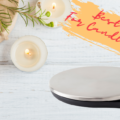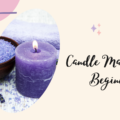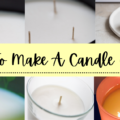Once upon a time, people used candles solely to light up a dark room. Today, strategically-placed candles can spell the difference between an average dinner and a romantic one, turn a regular bath into a fancy soak in the tub, and transform an uneventful evening into a relaxing and restful night. Because candles provide heat and comfort and improve how a room smells, it is easy to assume that lighting a candle can enhance air quality and lessen humidity. Unfortunately, this is not the case.
Candles are ineffective in getting rid of humidity because burning a candle causes its wax, primarily composed of hydrogen and carbon compounds, to transform into carbon dioxide and water vapor, increasing humidity.
Even so, this fact should not stop you from lighting candles. Understanding how candles affect humidity and the overall air quality of your room can help you decide when it’s best to burn one and improve the way you enjoy candles as a whole. This article will help you learn the relationship between candles and humidity and how you can still use candles while maintaining a healthy amount of moisture indoors.
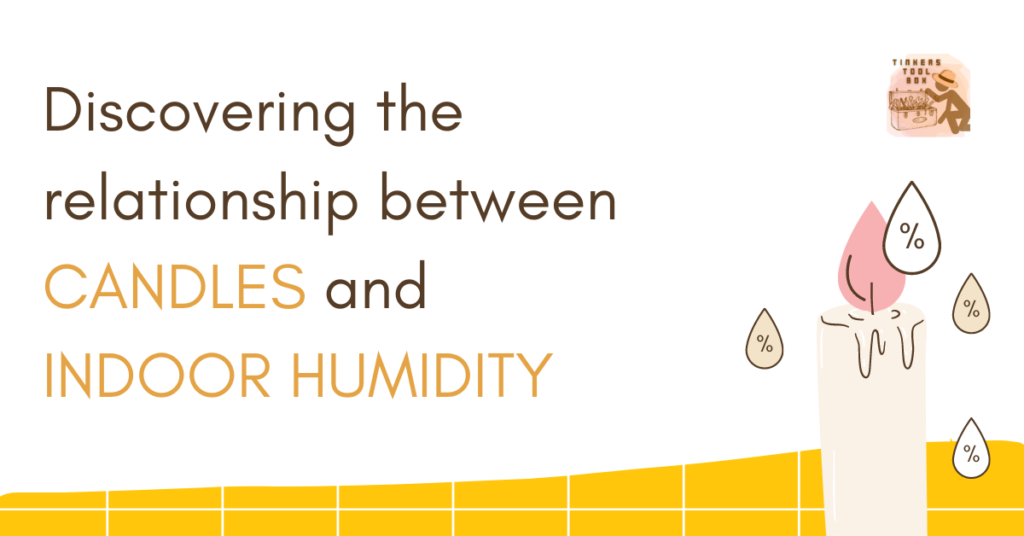
Discovering the Relationship Between Candles and Indoor Humidity
Much like how using a dehumidifier can help eliminate unwanted indoor odors, lighting candles with floral, fruity, earthy, or citrusy scents can change how a room smells. However, unlike dehumidifiers, candles cannot improve indoor humidity and may even make it worse. Here’s why.
Humidity at Home
Humidity tells us how much water vapor, which is water in its gas form, is in the atmosphere. As the amount of water vapor or moisture in the air rises, humidity also increases.
Indoor humidity, in particular, may be affected by several sources that produce water vapor. These sources include living creatures such as humans and animals, who emit water as part of their natural body processes such as breathing and perspiring.
Plants are no exception: the larger the houseplant is, the likelier it is to emit water vapor. In addition, household chores like doing the laundry, cleaning the house, washing the dishes, cooking, and everyday human activities like bathing and handwashing may also increase moisture in the air. Besides outdoor sources like trees, rain, and soil, all these may affect humidity at home.
Indoor humidity, in turn, can affect air quality and threaten your health. Some studies mention the role of humidity in spreading viruses and bacteria. Fungi and dust mites, which pose health risks, were also shown to thrive in humid areas.
The Essential Components of a Candle
Candles come in different shapes, sizes, colors, and scents. But no matter how varied candles are, you can break down all types into two primary components: the wick and the wax.
A candlewick comprises multiple threads entwined in a single braid, which may be primed with chemicals to reduce flammability.
Wax, on the other hand, serves as a candle’s primary source of fuel. It comprises different combinations of hydrocarbons — hydrogen and carbon compounds that take solid, liquid, and gas forms. When you light a candle, the wax melts into its liquid form then eventually becomes water vapor because of heat.
The Effect of Candles on Indoor Humidity
Since humidity causes discomfort and contributes to the presence of viruses, bacteria, fungi, and dust mites at home, intentionally finding ways to decrease humidity indoors is quite understandable.
Candles are used to improve the scent of our rooms and may seem like a viable choice to get rid of humidity. However, candles contain the same materials in water vapor, namely, hydrocarbons.
Because an increase in water vapor increases humidity, candles are not effective in getting rid of moisture in the air. Instead, it does the opposite: lighting a candle increases humidity!

Understanding Different Types of Candle Wax and How it Affects Indoor Humidity
As technology advanced and candle-making techniques evolved, the wax used to make candles became more varied and accessible. As a result, these types of wax differ in availability, price, quality, and how it affects our health and indoor environment.
Types of Candles According to the Wax Used
Candles differ according to shapes, sizes, production techniques, and purpose. The most basic differentiating factor, however, depends on the wax used to make a candle.
The earliest candles used tallow, a substance made of animal fat. Beeswax or the wax produced by bees also became a sought-after material for candle making during the Middle Ages because its smell and burn rate was better than candles made of fat.
On the other hand, bayberry wax is a material extracted from boiling the aromatic berries of the bayberry shrub. This process requires vast amounts of bayberries, making bayberry candles more expensive than other types of candles.
Today, some of the most common materials used for candles are paraffin wax and soy wax. Paraffin wax is cheaper and more accessible because it comes from the byproducts of petroleum. Despite this, soy wax is becoming a popular choice because it comes from soybeans, works well with essential oils and fragrance oils, and burns slower than paraffin.
Types of Candles that Cause Humidity
You can make candles from different types of wax. However, wax in all its forms still includes different combinations of hydrocarbons. Thus, whether you’re lighting a soy wax candle or a beeswax candle, it will still produce water vapor and increase humidity in your room.
Despite this, different types of candle wax may still emit other chemicals. In particular, studies on candles made of paraffin suggest that it causes air pollutants indoors. Meanwhile, soy wax is healthier for humans and the environment, as it does not produce petroleum emissions.

Using Candles while Maintaining Ideal Indoor Humidity
Candles may indeed contribute to higher humidity levels, but this should not be a reason for you to stop lighting them altogether. By burning candles properly and being mindful of your indoor setup, you can still use candles and maintain a healthy amount of humidity at home.
How to Burn Candles Properly
Properly burning your candles will regulate humidity and ensure that you get the most performance and burn time out of your candle.
A candle’s “performance” refers to the overall quality of its scent while it burns. On the other hand, burn time measures the length of time a candle can keep burning.
To maximize your candle’s performance, limit burn time to a maximum of four hours. Allowing your candle to burn longer than this may lead to wick mushrooming, which happens because of the presence of excess carbon. Meanwhile, extinguishing candles in less than four hours may result in tunneling, leaving excess candle wax around its circumference.
To manage your candle’s burn time, always trim its wick before each use. Longer wicks will burn your candles faster, causing an increase in gas emissions. Many candle makers indicate the ideal wick length for their particular candles, so check the package for more information.
The Ideal Indoor Setup for Lighting Candles
Many other factors independent of the candle itself can affect its performance and contribute to indoor humidity. For example, lighting too many candles in a poorly-ventilated room can lead to excess hydrocarbons in the atmosphere, increasing moisture and making it harder for occupants to breathe.
People, pets, and plants add to the heat and moisture present in a room. Therefore, the more occupants there are, the more hot and humid a room can be, with or without candles.
Kitchens and bathrooms, in particular, can already be humid as is, so do take this in mind before deciding to light candles in these areas. Similarly, burning candles when it’s relatively cold is more comfortable than doing so in warm weather.
Lastly, be sure to light the correct number of candles depending on the size of a room and the size of the candle itself. Candlemakers recommend lighting only one candle for every 10 square feet of space to regulate humidity and maximize the candle’s performance. A small-sized candle, ranging from 4 to 6 ounces, is perfect for small rooms such as bathrooms.
Meanwhile, you can light a medium-sized one in bigger spaces like a bedroom, a home study, or a living room. Large rooms such as dining halls may require you to increase the size and quantity of your candles to guarantee that their scent will permeate the whole area.
Conclusion
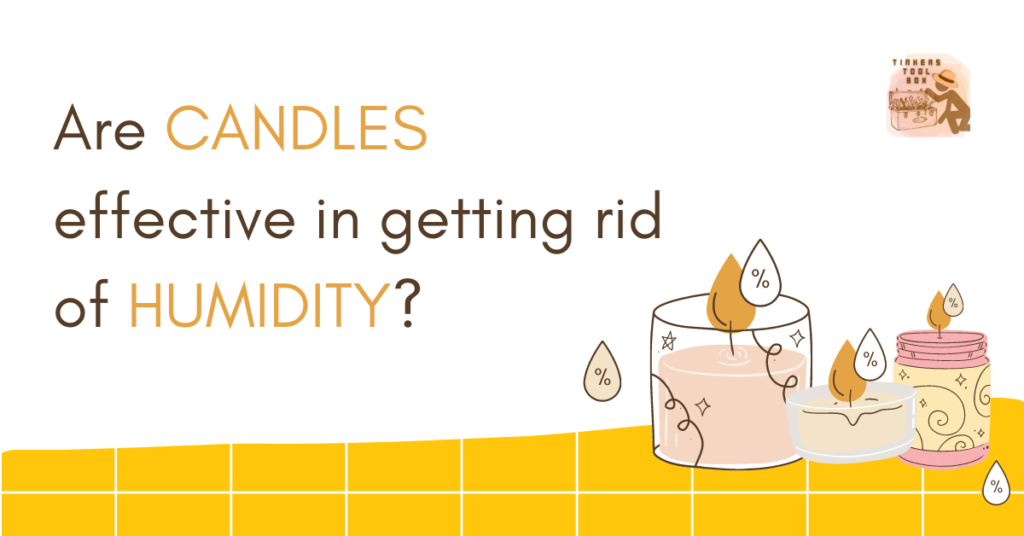
While the flickering light of a candle can dramatically change the ambiance of a room, its various calming scents are some of the main reasons we love burning candles indoors. Despite this, lighting candles does not necessarily improve air quality and can instead increase humidity indoors. In addition, depending on the wax used, candles can also emit air pollutants that are not healthy for you and the environment.
Nonetheless, these facts should not discourage you from lighting a candle and enjoying its benefits. On the contrary, you can use this information to make candle burning a healthier and more fun, and satisfying pastime for you and your family.

